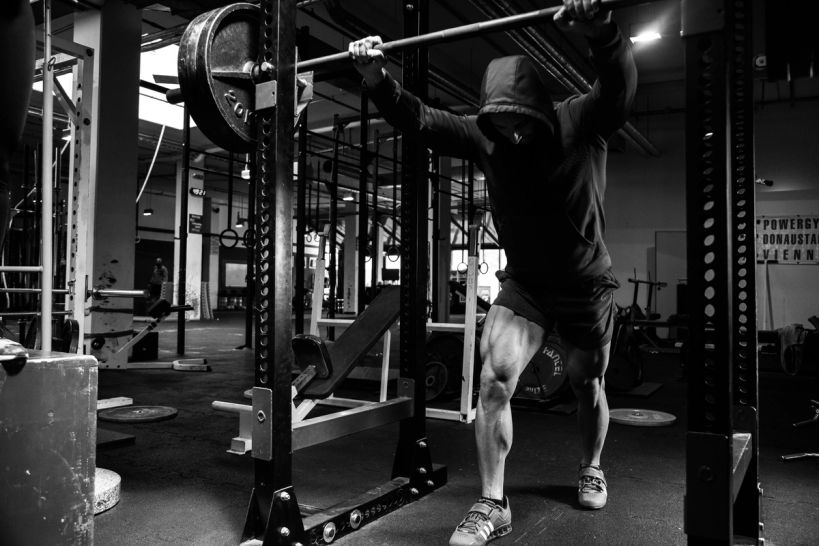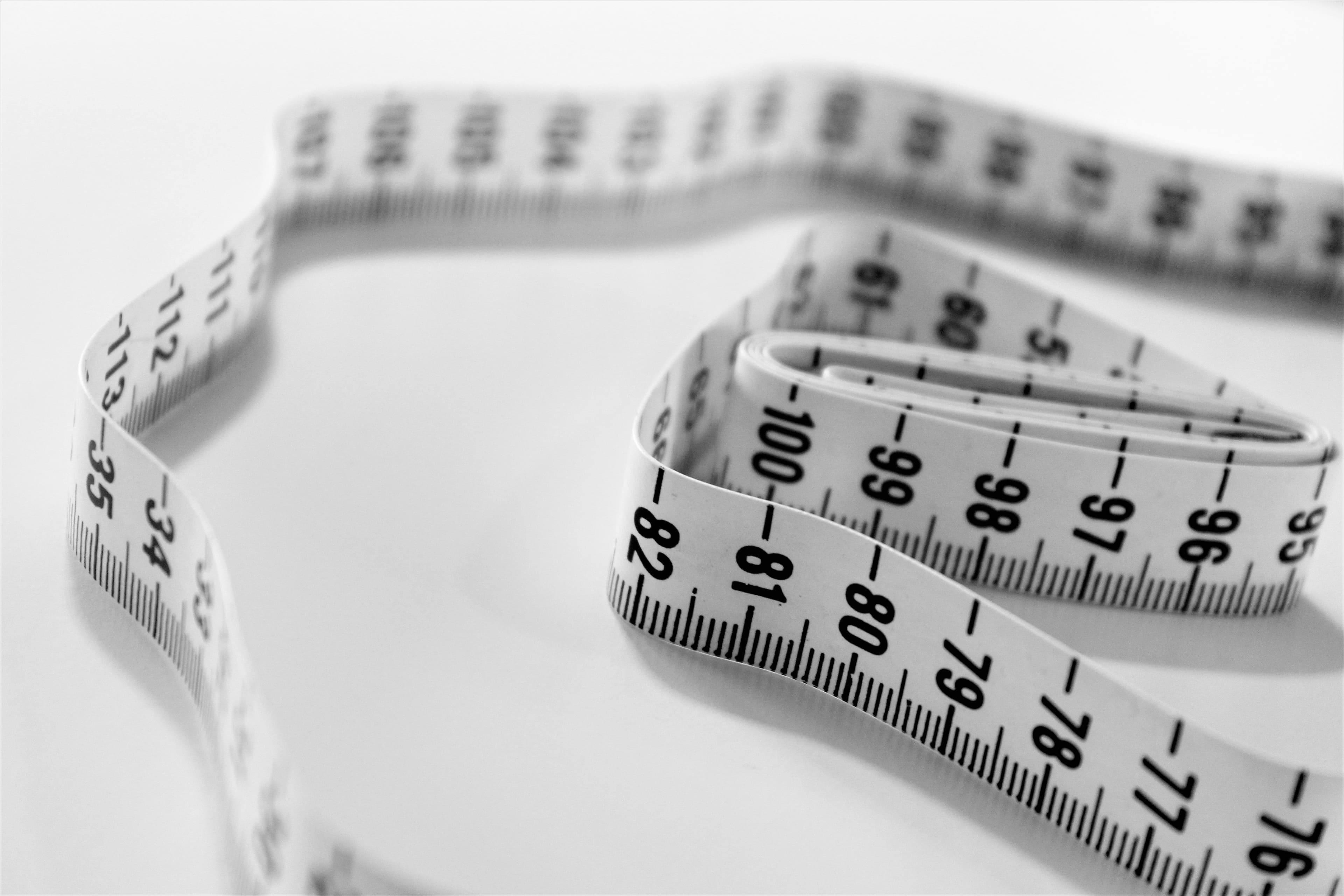How To Measure Body Fat At Home (No Equipment)
Introduction
Welcome, health enthusiasts! In today's article, we will delve into the fascinating world of measuring body fat at home—no fancy equipment required! We all know that maintaining a healthy body weight is important for overall well-being, but did you know that monitoring your body fat levels is equally crucial? Understanding your body fat percentage can provide valuable insights into your health and help guide your fitness journey.
Importance of Measuring Body Fat
Let's start by understanding why measuring body fat is so essential. While weighing yourself on a scale gives you a general idea of your weight, it fails to distinguish between the various components that make up your total weight. Body fat measurement, on the other hand, focuses specifically on how much fat is present in relation to other tissues in your body. Body fat plays a pivotal role in our health. Excessive body fat, especially around the abdomen (visceral fat), has been associated with an increased risk of developing chronic conditions such as heart disease, diabetes, and certain cancers. Conversely, having too little body fat can also have detrimental effects on our health. It's important to strike a balance and maintain an optimal level of body fat for overall well-being.
Benefits of Measuring Body Fat at Home
Now that we understand the importance of measuring body fat let's explore the benefits of doing it right in the comfort of your own home:
- Convenience: No need to schedule appointments or visit a specialized facility. With simple techniques we will discuss later in this article, you can easily measure and monitor your body fat within minutes from the comfort of home.
- Cost-Effectiveness: Professional methods like underwater weighing or DEXA scans can be expensive. By measuring body fat at home, you can save on costs without compromising accuracy.
- Privacy: Some individuals may feel uncomfortable or self-conscious about having their body fat measured in a clinical setting. Measuring at home provides a private and comfortable environment, allowing you to focus solely on obtaining accurate results.
- Tracking Progress: Monitoring your body fat levels over time allows you to track your progress on your fitness journey. By identifying trends and making adjustments to your nutrition and exercise routine, you can work towards achieving your desired body composition goals.
- Educational Experience: Taking the time to measure your own body fat not only provides valuable information about your health but also helps deepen your understanding of the human body. It empowers you by putting the tools for self-assessment in your hands.
By now, it should be evident that measuring body fat is more than just a number on a scale. It empowers us with knowledge about our bodies and allows us to make informed decisions regarding our health and well-being. So, let's dive into various methods and techniques that will enable you to measure body fat accurately at home—no fancy equipment necessary!
Understanding Body Fat
What is body fat?
Body fat, also known as adipose tissue, is an essential component of our bodies. It serves various functions, such as insulation, cushioning organs, and acting as a source of energy. Unlike muscle or bone, which have distinct shapes and structures, body fat is soft and pliable. Adipose tissue consists of fat cells called adipocytes that store energy in the form of triglycerides. When we consume more calories than our bodies need for immediate energy expenditure, the excess energy gets stored in these fat cells. This storage allows us to tap into it later when food intake decreases or during periods of high energy demand.
Different types of body fat
Not all body fat is created equal! There are two primary types: subcutaneous fat and visceral fat.
Subcutaneous Fat: The Protective Layer
Subcutaneous fat resides just beneath the skin's surface and plays a crucial role in maintaining body temperature by providing insulation. It acts as a protective layer for our internal organs and provides shape to our bodies. This type of fat tends to accumulate around areas like the abdomen, thighs, hips, and buttocks. While excess subcutaneous fat can impact appearance and self-esteem for some individuals, it generally poses fewer health risks compared to another type called visceral fat.
Visceral Fat: The Hidden Danger
Visceral fat lurks deeper within the abdominal cavity around vital organs such as the liver, pancreas, and intestines. Unlike subcutaneous fat that lies just beneath the skin's surface—visible belly fats—it cannot be easily seen or pinched. Excessive visceral fat accumulation increases health risks because it releases hormones that can disrupt normal bodily functions. High levels have been linked to increased insulin resistance (a precursor to diabetes), heart disease, high blood pressure, and even certain types of cancer. It is crucial to keep an eye on visceral fat levels for overall health and well-being. Understanding these two types of body fat will help us better comprehend the significance of measuring body fat accurately. In the next section, we will explore various methods that can be used at home (without equipment) to assess our body fat levels and gain insights into our health status.
Methods to Measure Body Fat at Home (No Equipment)
Visual Estimation Techniques
When it comes to measuring body fat without any equipment, visual estimation techniques can be handy. The mirror method is a simple yet effective way to gauge your body fat level. Stand in front of a full-length mirror and observe your reflection. Pay attention to areas where fat tends to accumulate, such as the abdomen, hips, and thighs. Additionally, you can perform the pinch test by gripping a portion of your skin and underlying fat between your thumb and forefinger. Compare the thickness of the pinched area with reference images or charts available online to estimate your body fat percentage.
Body Measurements and Calculations
Two popular methods for estimating body fat at home involve using simple measurements: waist-to-hip ratio (WHR) and body mass index (BMI). For WHR, measure the circumference of your waist at its narrowest point and divide it by the circumference of your hips at their widest point. A ratio greater than 0.85 for women or 0.90 for men may indicate excess body fat. On the other hand, BMI calculates body fat based on height and weight measurements by dividing weight in kilograms by height in meters squared.
DIY Skinfold Caliper Method
The DIY skinfold caliper method requires basic materials such as a ruler, marker, and calculator. Start by identifying specific sites on your body where you will take skinfold measurements, including triceps, biceps, subscapularis (below shoulder blade), suprailiac (above hip bone), etc. Pinch the skinfold using two fingers and measure its thickness with a ruler while keeping the muscles relaxed. Use an online calculator or formula specific to gender for estimating body fat percentage based on these measurements.
Factors to Consider When Measuring Body Fat at Home
Consistency in Measurements
To obtain reliable results, it is essential to maintain consistency during body fat measurements. Factors such as the time of day and clothing worn can influence readings. It is recommended to measure body fat at the same time each day, preferably in the morning before eating or drinking. Moreover, wear lightweight clothing or opt for skin-to-skin contact to ensure accurate measurements.
Limitations and Accuracy of Home Measurements
It's important to note that home measurements may have limitations in terms of accuracy. Results can vary due to factors like individual measurement technique and variations in skin thickness. It is crucial to understand that professional methods, such as DEXA scans or hydrostatic weighing, offer higher accuracy than home-based techniques. However, these methods are generally more expensive and require specialized equipment.
Interpreting the Results
Ideal Body Fat Percentages Based on Gender and Age
Interpreting body fat percentages depends on gender and age demographics. Generally, men have a higher ideal range of body fat percentage (between 6% - 24%) compared to women (between 16% - 30%). Additionally, acceptable ranges may vary with age due to hormonal changes and metabolic differences.
Health Implications of High or Low Body Fat Levels
Both high and low body fat levels can have health implications. Excess body fat increases the risk of conditions such as heart disease, diabetes, and certain types of cancer. On the other hand, having too little body fat can result in nutrient deficiencies, weakened immunity, hormonal imbalances, and decreased muscle mass. Striving for a healthy balance is crucial for overall well-being.
Tips for Maintaining Healthy Body Fat Levels
Balanced Diet and Portion Control
Maintaining a balanced diet is a fundamental aspect of managing body fat levels. Focus on consuming nutrient-dense foods, including lean proteins, fruits, vegetables, whole grains, and healthy fats. Additionally, practicing portion control can help prevent overeating and promote a sustainable energy balance.
Regular Physical Activity and Exercise Routine
Engaging in regular physical activity is vital for managing body fat levels. Incorporate both cardiovascular exercises (such as jogging or cycling) and strength training (using resistance bands or bodyweight exercises) into your exercise routine. Physical activity not only supports fat loss but also improves overall fitness and metabolic health.
Frequently Asked Questions about Measuring Body Fat at Home
Coming Soon!
Conclusion
Measuring body fat at home without any equipment is possible through various techniques like visual estimation, measurements such as WHR and BMI, or using the DIY skinfold caliper method. However, it's important to remember that these methods have limitations in terms of accuracy compared to professional methods. Nevertheless, by maintaining consistency in measurements and considering factors like time of day and clothing worn during measurement, you can estimate your body fat percentage effectively. Interpreting the results based on ideal ranges for gender and age helps understand one's health implications better. By adopting a balanced diet with portion control along with regular physical activity and exercise routine, you can strive for healthy body fat levels while improving overall well-being.
About The Author


Get your macronutrients breakdown
Fill out the form below to get a preview of your recommended daily calorie and macronutrient breakdown.

Why I Stopped Gaining Muscle (The Honest Truth)
Why I Stopped Gaining Muscle (The Honest Truth) The Importance of Gaining Muscle When it comes to health and fitness, gaining muscle holds a signifi...

Reverse Diet To Lean Bulk - Macros Included
Reverse Diet To Lean Bulk - Macros Included Introduction to Reverse Dieting Welcome, fitness enthusiasts! Today, we embark on an exciting journey in...



